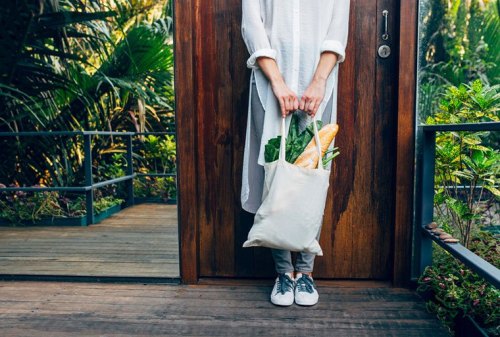Our editors independently select these products. Making a purchase through our links may earn Well+Good a commission
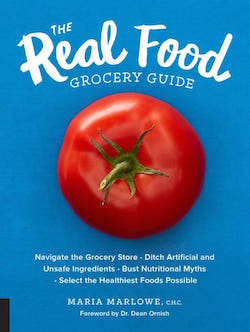
Savvy grocery shoppers have a few rules they live by: Buy what’s in season, avoid unpronounceable 12-letter ingredients, and beware of too much sugar. But even health-focused supermarket ninjas can get stumped by the more nuanced dilemmas that pop up while you shop: Does egg color really matter? Is loose-leaf lettuce cleaner than the bagged, pre-washed kind? And is skim milk better for you than whole?
These questions are no-brainers for integrative nutritionist Maria Marlowe, CHC. She recently wrote the book on smart shopping—seriously. In The Real Food Grocery Guide, Marlowe answers your pressing questions about how to buy food that’s truly best for your body, from what sneaky ingredients have GMOs to how to choose the most nutrient-dense produce possible.
Here, she uses her insider knowledge to reveal what she wishes more people knew about navigating the grocery store.
Scroll down for six food shopping mistakes a nutritionist wishes healthy people would stop making.

1. Buying imported food
Healthy foodies talk a lot about buying local, and many restaurants even tout their regional sourcing on their menus. But what if you live in a city and the closest thing to a farm you have within 50 miles is a community garden? Wouldn’t foods imported from a better environment be better quality?
Regardless of where you live, Marlowe is still Team Local. “Food in the grocery store is shipped in from all across the country—and world—so it’s picked weeks in advance when it’s still underripe,” she says. “By the time it gets to us, it’s days or weeks old.” During this lag time, nutrients start to degrade. “Getting something from the local farmers’ market that was either picked last night or that morning at its peak ripeness will definitely be more nutritious,” Marlowe says. So prep your shopping list, pack your tote, and set your alarm for a morning trip to the greenmarket.
The one exception: If your local produce isn’t organic (especially if it’s something on the Dirty Dozen list), Marlowe says the imported option is the better choice.

2. Choosing pre-washed lettuce
Whatever your go-to greens may be, bagged salad just seems, well, cleaner than the loose kind. But Marlowe promises it isn’t.
“The less hands on your greens, the better,” Marlowe says. “With loose salad, you’re the only one washing it and not relying on someone else to do it.” Considering the number of e-coli and listeria outbreaks linked to pre-washed greens, she seems to be on to something. (She’s not alone—it’s also the one thing a food poisoning expert says he won’t eat.)
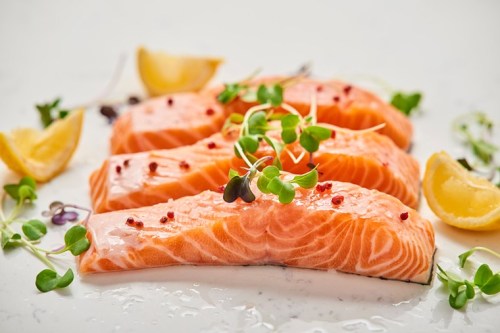
3. Buying farmed fish instead of wild
When considering your options in the meat aisle, differentiating between pasture-raised, grass-fed, cage-free, free-range, and wild options can get pretty complicated. Just like with your veggies, Marlowe recommends you seek out organic meat, which means that in addition to living hormone- and antibiotic-free lives, even the animals’ feed is GMO-free. She also says you should go for pasture-raised when you can, which means that the animals spent the bulk of their lives outdoors and grazing. If that’s not available, the second-best option is grass-fed, meaning the animals ate grass instead of grains, which is healthier (unfortunately, quinoa bowls aren’t what you’d call cow-friendly).
For chicken, Marlowe says, like other meat, pasture-raised is best, with free-range, free-roaming also being a good option—it tells you the animals had some element of freedom. She adds that cage-free is more of a marketing gimmick, though it is applicable when it comes to buying eggs.
As for fish, Marlowe’s advice is to go for ones labeled “wild.” “This [label] means the fish were still raised in an enclosed environment, but they weren’t given any antibiotics or hormones and had more of a freer life than farmed fish.” She also says wild fish tend to have lower mercury levels than their farmed counterparts.
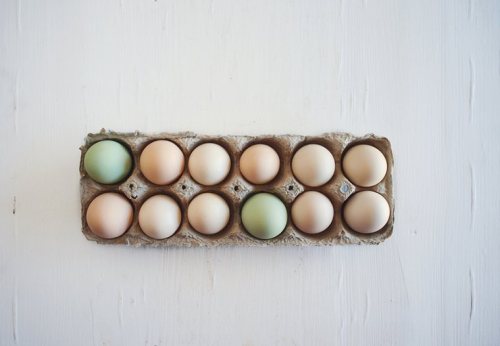
4. Buying eggs based on shell color
Speaking of eggs, it’s time to settle this once and for all: Does shell color really matter? “I get asked this a lot,” Marlowe says. “It doesn’t. It just varies because of hen breed.” So no, brown eggs are not healthier than white eggs.
But what does matter is the color of the yolk. “If you go to the farmers’ market and buy your eggs, usually the yolk is so much more pigmented and bright than when you buy eggs from the grocery store,” she says. It’s almost an orange-yellow color. “When animals are raised more in their natural environment, they tend to be a little more nutritious and taste better.” Case closed.

5. Choosing skim milk over whole
People have strong feelings about what fat percentage of milk is best, with many well-meaning healthy eaters opting for a skinny vanilla latte (sugar-free, of course) over the full-fat alternative. But are they right to think it’s better to buy lower fat percentages? In a word: no. Marlowe recommends buying organic milk (for similar reasons as choosing organic meat) and going with the full-fat option. “It’s actually better for you because it’s more filling than the lower-fat versions, so you’ll be satisfied with less,” she says.
This buying tip extends to yogurt, too. “The fat is what tastes good, so when brands take it out, they have to add something else in—which more often than not is sugar,” Marlowe says. “So while it may be lower in fat, it will be higher in sugar.”
And, by the way, fat is not a bad thing. “One study also showed that people who drank whole milk were less likely to have acne than those who drank low-fat milk,” Marlowe says. “Also, it seems counterintuitive, but lower-fat milk is associated more with weight gain than full-fat milk.”
All that being said, Marlowe stresses that a healthy diet does not need to include dairy (which has been linked to inflammation).
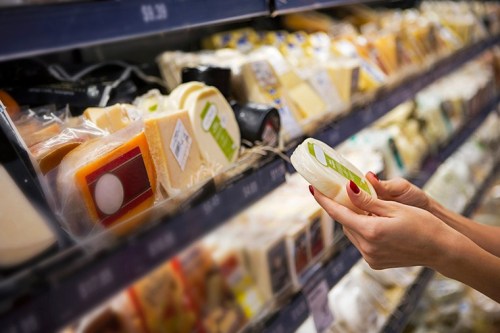
6. Assuming dairy- and gluten-free options are always better
Prefer nut milk to dairy? Marlowe says the most important trait to keep in mind when deciding between nut milks is a clean ingredients list—and that goes for anything dairy-free. “If you look at some of the alt-milks or [nut cheeses], they have a whole long list of strange additives,” she says. “The key is to find brands that keep it simple—and the good news is that more of them are popping up all the time.” After that, choose whichever you think tastes best.
Similarly, you’d be wrong to assume that all gluten-free options are healthier than their gluten-filled counterparts. Too many additives and fillers can bring down the health value, so opt for naturally gluten-free grains (like amaranth, quinoa, and oats) when you can.
Marlowe has one last tip that applies to everything on your shopping list: Pay attention to how what you eat makes you feel. “Your body will talk to you—and if something isn’t good for it, you’ll know.”
Originally posted July 10, 2017. Updated May 17, 2018.
Something else to add to your shopping list: Trader Joe’s avocado yogurt. And while you’ve got ingredients lists on the mind, here’s what the term “natural flavors” really means.
Sign Up for Our Daily Newsletter
Get all the latest in wellness, trends, food, fitness, beauty, and more delivered right to your inbox.
Got it, you've been added to our email list.
